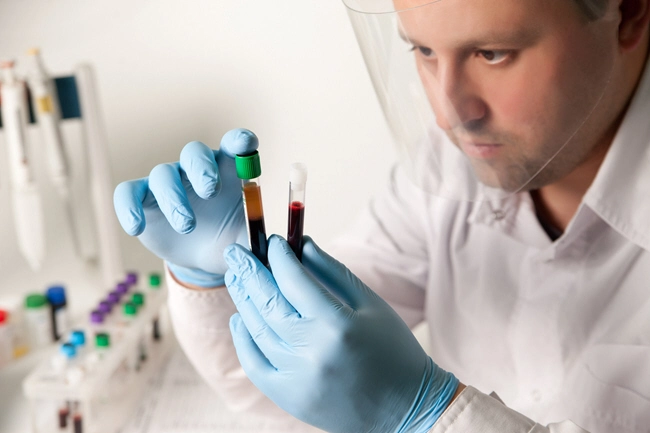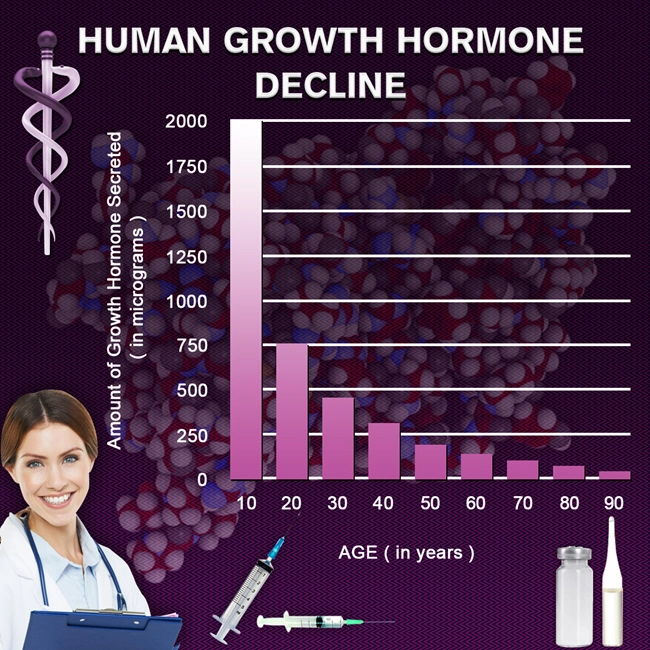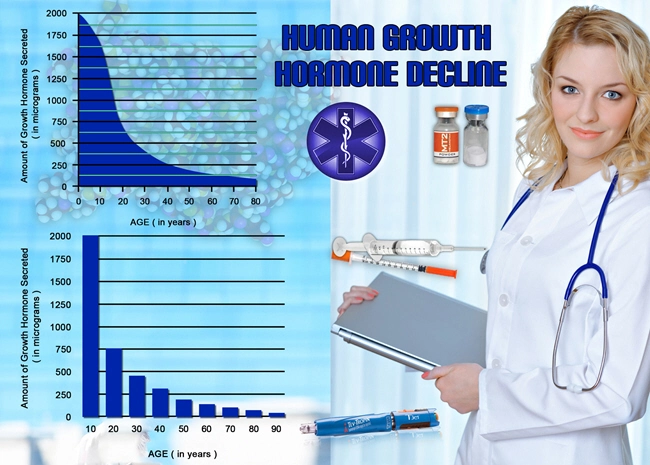
Video Link: https://vimeo.com/285652561
Video Download: Click Here To Download Video
Video Stream: Click Here To Stream Video
Video Link: https://vimeo.com/285652461
Video Download: Click Here To Download Video
Video Stream: Click Here To Stream Video
The Pituitary Gland
Here’s Why it is referred to as “The Master Gland.”
It’s small. About the size of a pea. It’s hidden in a bony cavern called the pituitary fossa, behind the bridge of the nose, between your ears, and beneath the base of the brain.
When compared to the body’s major organs (heart, liver, kidneys, stomach, etc.) it is often overlooked. But that is a severe mistake. If your pituitary gland is out-of-whack you may experience a cascade of problems...including a lack of Human Growth Hormone (HGH).
The Pituitary Gland Plays a Constant, Vital, and Life-Preserving Role Every Second of Your Life
The pituitary gland is often called “The Master Gland” since it acts as the control center for several other hormonal glands (e.g., thyroid, adrenal, hypothalamus, pineal).
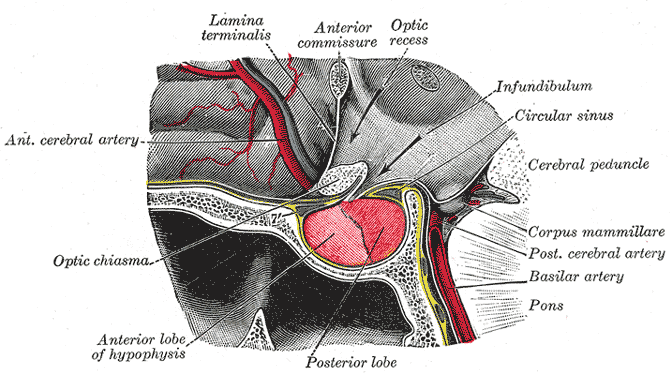
To put it simply: when it quits, you quit. Despite its size, this tiny gland is a powerhouse that manufactures hormones that influence several vital functions in your body.
Here is a list of the critical hormones produced by the pituitary:
- Human Growth Hormone (HGH). This hormone is so essential for our well-being. From blow-torching fat and easing joint aches and pains to skyrocketing your energy levels and awakening your long-slumbering muscles, restoring your growth hormone to its active level is the ticket. How important is HGH? Here’s an easy way to remember: too little HGH = dwarfism. Too much = gigantism. Excess HGH can result in a condition called acromegaly, which causes facial features to become coarse and rough, a deepening voice, and abnormal growth of hands, feet, and skull. The pituitary regulates growth hormone to keep it at a steady level.
- Oxytocin. This is the so-called “love hormone” that restores emotional balance in testosterone-laden men and provides significant help to women in childbirth, labor, and lactation. It also initiates labor and uterine contractions.
- Prolactin. Notable in the manufacturing of breast milk and nursing.
- Thyroid-stimulating hormone (TSH). This hormone acts as a thermometer by controlling the manufacture of thyroid gland hormones (T-3 and T-4).
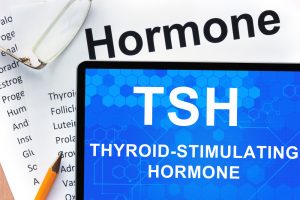
- Adrenocorticotropic hormone (ACTH). This hormone regulates the production of the so-called “stress hormone” cortisol and dehydroepiandrosterone (DHEA) that are produced by the adrenal gland.
- Luteinizing Hormone (LH) and Follicle-Stimulating Hormone (FSH). These two work as a team to play a huge role in fertility and pregnancy.
- Antidiuretic Hormone (ADH). This hormone is also known as vasopressin. It is produced in the hypothalamus gland and stored in the pituitary. It affects the production of urine by causing the kidneys to absorb more water, which results in less urine production. Alcohol interferes with the release of ADH which explains why many drinkers make a continual path to the bathroom due to greater urine flow.
So you can see just how important the job of the pituitary gland is and why it is so critically important.
If just one of these hormones is deficient, this could spill over and affect the other hormones as well. The result? Abnormal body functions manifest a wide array of symptoms. Here is a list of the common symptoms experienced by those suffering from a problem with their pituitary gland:
- Extreme sensitivity to cold
- Weight loss or weight gain
- Weakness and constant fatigue
- Digestive disorders
- Excessive thirst
- Reduced appetite
- Stiff joints
These are the general symptoms of pituitary problems. There are also specific symptoms that appear as a result of the type of pituitary hormone deficiency. Here's a list of them by individual hormones:
- Growth hormone (GH) deficiency. In children, this can result in slow growth and short height. In adults, a lack of growth hormone can cause an increase in fat, muscle weakness, and accelerated aging.
- Luteinizing hormone (LH) and Follicle-stimulating hormone (FSH) deficiency. When these hormones are lacking there is often a drop in libido,
 infertility, vaginal dryness, and unusual menstrual periods in women, and erectile dysfunction in men.
infertility, vaginal dryness, and unusual menstrual periods in women, and erectile dysfunction in men. - Adrenocorticotropic hormone (ACTH) deficiency. Here we often see ashen skin, blood pressure dropping to unhealthy levels, low serum sodium levels, and pain and discomfort in the digestive system.
- Thyroid-stimulating hormone (TSH) deficiency. Thyroid problems are all-too-common, and result in dry skin, low red blood cells count, extreme sensitivity to cold, unwanted weight gain and ugly swelling throughout the body, digestive problems, and difficulties concentrating and remembering.
Ugly, ugly, ugly. Again, you can see just how vital this minute gland is, a long with its importance.
But before we delve into the cause of pituitary problems and how they are treated, let’s take a more in-depth look at exactly how the pituitary functions.
As mentioned earlier, the pituitary gland is the control center of several hormones.
In that role, it is part of a messenger system, and since it originates the messages, it is considered the most critical part of the endocrine system.
The pituitary controls the body’s functions by sending these various hormones into your bloodstream.
Then the blood carries them to their target, which causes the release of other hormones.
The targets may be body tissues such as clusters of cells. The final destination of these hormones can also be specialized endocrine glands.
Why is this important? Because hormones are chemical couriers that assist the body’s organs in communicating with each other.
Without this constant interplay, the body’s balance, or homeostasis, can be knocked out of whack.
These hormones control metabolism, blood pressure, growth, individual functions of the sex organs, and pain relief.
This is Important for a Variety of Reasons
These hormones are the key to maintaining the body’s internal environment. Temperature, water, salt, oxygen, calcium, protein, sugar, fat -- all of these need to be kept at constant levels. This complex interplay goes on continually, and without it, our systems would go haywire.
Remember, the body is in a constant state of change. Every function from blood pressure, temperature, and heartbeat all respond to the ever-changing environment (both external and internal) to maintain homeostasis. The glands of the body, including the pituitary, are involved in a continuous circuit.
Here’s an Example
The hypothalamus tracks the hormonal levels in all of the various glands.
When these levels drop below a certain threshold the hypothalamus kicks in to 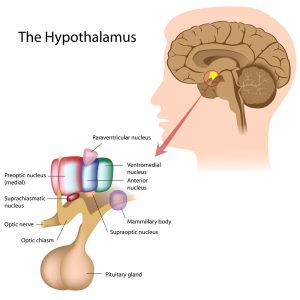 release additional hormones.
release additional hormones.
These released hormones then travel to the pituitary and are targeted to the area where they’re needed.
For example, let’s consider the thyroid gland. The hypothalamus manufactures a hormone named thyrotropin-releasing hormone (TRH).
Then TRH moves to the pituitary and causes the pituitary to release thyroid-stimulating hormone (TSH).
Next, TSH runs to the thyroid gland and stimulates the release of two other thyroid hormones: T-3 and T-4.
When these levels rise to the average amount, this is noticed by the hypothalamus and signals that the gland stops releasing more TRH.
This is referred to as negative feedback and is crucial to maintaining homeostasis.
If this didn’t occur, the levels would continue to rise and be as much of a problem as low concentrations.
Consider this: this endless cycle goes on continually, involving different messages, signals, and hormones.
The complexity is incredible, and the glands must work as a highly efficient team to get the job done.
And they need the control center of the pituitary to coordinate this array of assignments.
The Anatomy of the Pituitary
The pituitary has two main parts: the front of the gland called the anterior pituitary, and the back of the gland called the posterior pituitary.
The difference between these parts is simple. They release different hormones aimed at various areas of the body. The anterior pituitary releases seven 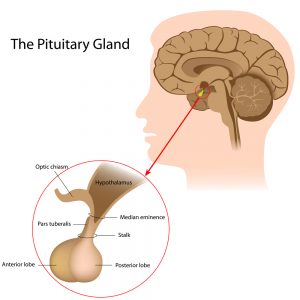 different hormones, while the posterior releases only two.
different hormones, while the posterior releases only two.
Additionally, there is another region of the gland located between the two main parts called the intermediate section, which releases only one hormone.
Finally, there is the stalk, which is the connecting highway between the pituitary posterior and the hypothalamus gland.
The Effects of Pituitary Disorders
Hopefully, by now you can appreciate this continual, delicate, and precise balance between the hormones of the body.
The pituitary must continue to function at optimal levels; activity levels must not be excessive or insufficient.
When the pituitary produces an excess of one of its hormones, here are a few of the possible resulting conditions:
- Acromegaly. This is a condition that causes facial features to become coarse and rough, a deepening voice, an unnatural growth of hands, feet, and skull, high blood pressure, high blood sugar, cardiovascular problems, sleep apnea, carpal tunnel syndrome, increased snoring and pain -- especially headaches.
- Cushing’s syndrome. This debilitating condition occurs when the body is subject to a constant overload of cortisol, the so-called “stress hormone.” This can result from overuse of corticosteroid medication, over-training, inability to deal with stress, poor nutrition, and depression. It may cause weight gain, increased fat deposits, high blood pressure, anxiety, depression, muscle weakness, weakening of bones, and cognitive impairment.
- Prolactinoma. This is a noncancerous (benign) pituitary tumor that produces a hormone called prolactin. The result is too much prolactin in the bloodstream. This can cause headaches, decreased libido, infertility in women, erectile dysfunction in men, vision problems, nausea and vomiting, and challenges with the sense of smell.
When the pituitary fails to produce a sufficient amount of its hormones the possible results include:
- Diabetes insipidus. This is an uncommon disorder that causes an imbalance of water in the body. Naturally, this causes intense thirst even after drinking copious amounts of liquid and excreting massive amounts of urine.
- Injury to or tumors of the hypothalamus, which carries over to the pituitary.
What Causes Pituitary Problems?
After reading the consequences of pituitary dysfunction, you can now see how important the healthy function of the gland is. To help you avoid these problems, let’s review their causes.
Pituitary Tumors
Pituitary tumors are the most frequent cause of pituitary problems and regrettably are somewhat common in adults. The good news is that they are not brain tumors and are usually benign (non-cancerous).
There are two types of pituitary tumors: secretory and non-secretory.
Secretory tumors produce an excess of pituitary hormones while non-secretory ones do not. However, both of these can wreak havoc if they become too large and begin to adversely affect the normal functioning of the pituitary or other close glands in the brain.
There are three categories of problematic conditions arising from these tumors:
- Hypersecretion. An excess of hormone levels in the body may be due to a secretory pituitary tumor.
- Hyposecretion. Insufficient levels of any hormone in the body may be a result of a large pituitary tumor which puts direct pressure on the gland, which interferes with the gland’s ability to produce the standard level of hormones. This can also result from surgery or radiation of a tumor.
- Tumor size effects. As the tumor expands, it presses against one or more of the glands in the region including the pituitary. The typical results are headaches and vision problems.
As the tumor enlarges and continues to pressure the pituitary, this can result in the previously mentioned symptoms.
In addition to tumors, other causes of injury to the pituitary gland are particular types of medications and traumatic injury to the brain which can result in bleeding inside the brain close to the pituitary.
Also, the pituitary can suffer damage from infections: tuberculosis, sarcoidosis (an inflammatory affliction that affects many organs in the body, usually the lungs) congenital and genetic origins, and ischemia (restriction of blood supply to tissues, resulting in a shortage of oxygen or glucose necessary to keep the cells of the tissues alive).
Finally, there is a third condition causing pituitary problems: hypopituitarism. This is a rare condition that affects less than 200,000 people in the United States annually, with an incidence of 4.2 cases per 100,000 folks per year.
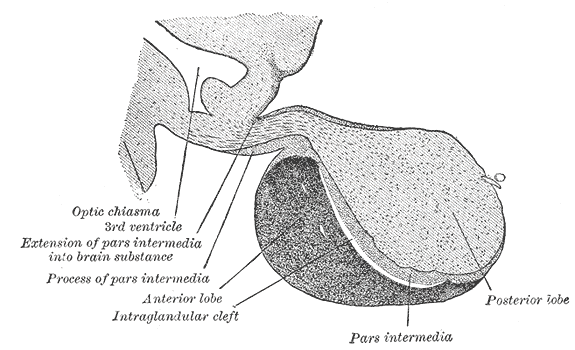
There is a particular subset of the population that is overrepresented in that statistic: anyone who has experienced a brain injury.
The definition of Hypopituitarism is a condition in which the pituitary gland fails to produce one or more vital hormones or doesn’t create them in sufficient amounts. The symptoms of this disease are similar to the symptoms resulting from the hormone deficiency listed above.
Treatment of Pituitary Disorders
The first step in treating pituitary disorders is to identify the exact cause of the condition and the particular hormone that is causing the problem.
Then the correct course of action can be determined. Often, hormone replacement therapy will be used to treat hypopituitarism.
 There are some situations where proper management of the condition will result in a full recovery, and treatment may no longer be necessary.
There are some situations where proper management of the condition will result in a full recovery, and treatment may no longer be necessary.
There are other instances where no treatment is required.
However, there are times when hormone replacement therapy must continue on a life-long basis.
Therefore, it is of vital importance for patients undergoing this therapy to be aware of any changing circumstances in their lives that may require an adjustment to their treatment.
An increased level of hormones is needed during times of high stress. This requires regular blood testing to keep an accurate measure of a patient’s hormone levels.
There are circumstances when surgery and radiotherapy may be needed for some patients. If the problem is an expanding tumor in the brain, it might have to be surgically removed, or killed with radiation.
As with so many health issues, it all comes down to the ancient cliché: “an ounce of prevention is worth a pound of cure.”
In other words, do all you can to protect your head.
Wear protective headgear when you are in any environment or doing any activity that would have the risk of head injury.
Consider adding balance training to your exercise routine to prevent falls.
It can be as simple as just taking the time to stand on one leg for a minute or two during the day.
As we age, the consequences of falling are increasingly devastating, and having the right balance will put the odds in your favor. There are also many types of fitness equipment geared toward equilibrium.
Prevent falls and protect your precious brain!
Most importantly, slow down. All too many accidents are a result of someone being in a hurry.
Common sense needs to prevail.
An extra minute or two here and there, as opposed to a lifetime of pituitary problems, should be rather easy to measure...and even easier to arrive at the correct conclusion.
Your endocrine system is a delicate, intricate system. Respect it, and it will continue to work its miracles for you.
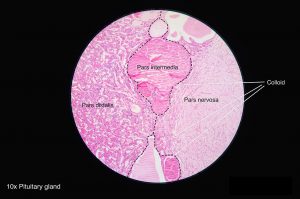
Contact Us Today For A Free Consultation
Dear Patient,
Once you have completing the above contact form, for security purposes and confirmation, please confirm your information by calling us.
Please call now: 1-800-380-5339.
Welcoming You To Our Clinic, Professor Tom Henderson.

- A Major Breakthrough in Anti-Aging Science is now Reality! [Last Updated On: October 12th, 2024] [Originally Added On: September 19th, 2020]
- All the Different Brands of Human Growth Hormone -- Guide [Last Updated On: February 10th, 2025] [Originally Added On: September 21st, 2020]
- Weight Loss Through HGH [Last Updated On: February 10th, 2025] [Originally Added On: September 24th, 2020]
- Did You Know: Sarcopenia is Increasing Among Senior Citizens at a Blistering Pace? [Last Updated On: February 8th, 2025] [Originally Added On: October 5th, 2020]
- Growth Hormone and Sleep [Last Updated On: February 9th, 2025] [Originally Added On: October 8th, 2020]
- Hormone Replacement Therapy Program Protocol Diary [Last Updated On: October 11th, 2024] [Originally Added On: October 9th, 2020]
- The Curse of Non-Alcoholic Fatty Liver Disease [Last Updated On: February 6th, 2025] [Originally Added On: October 11th, 2020]
- How Can I Get More HGH (Human Growth Hormone) Naturally? [Last Updated On: July 27th, 2024] [Originally Added On: August 16th, 2021]
- Cholesterol and Growth Hormone...the Truth May Surprise You! [Last Updated On: February 5th, 2025] [Originally Added On: October 7th, 2021]
- Growth Hormone FAQ's [Last Updated On: February 4th, 2025] [Originally Added On: October 8th, 2021]
- Growth Hormone: A powerful tool to battle Erectile Dysfunction [Last Updated On: February 6th, 2025] [Originally Added On: October 8th, 2021]
- How to buy Growth Hormone [Last Updated On: February 7th, 2025] [Originally Added On: October 8th, 2021]
- Testosterone Battles Diabetes [Last Updated On: February 3rd, 2025] [Originally Added On: October 8th, 2021]
- Growth Hormone protects your Adrenal Glands [Last Updated On: February 4th, 2025] [Originally Added On: October 8th, 2021]
- Buy Growth Hormone! [Last Updated On: February 9th, 2025] [Originally Added On: October 8th, 2021]
- Growth Hormone reduces Heartburn [Last Updated On: February 5th, 2025] [Originally Added On: October 8th, 2021]
- The Link Between Diabetes and Growth Hormone [Last Updated On: February 7th, 2025] [Originally Added On: October 8th, 2021]
- Growth Hormone and Nutraceuticals [Last Updated On: February 8th, 2025] [Originally Added On: October 8th, 2021]
- Growth Hormone and Depression [Last Updated On: February 3rd, 2025] [Originally Added On: October 11th, 2021]
- Growth Hormone and Calorie Restriction. [Last Updated On: February 2nd, 2025] [Originally Added On: October 11th, 2021]
- Growth Hormone and Healthy Living Can Add Years to Your Life! [Last Updated On: February 2nd, 2025] [Originally Added On: October 11th, 2021]
- Welcome to Growth Hormone and Testosterone Therapy [Last Updated On: December 27th, 2024] [Originally Added On: October 11th, 2021]
- Human Growth Hormone Medical Guide [Last Updated On: June 9th, 2024] [Originally Added On: October 25th, 2021]
- HGH Female Blood Panel [Last Updated On: July 9th, 2022] [Originally Added On: October 28th, 2021]
